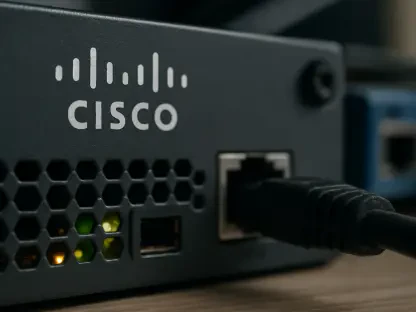The increasing reliance on cloud technologies, coupled with the adoption of hybrid strategies, has sparked concerns about a potential cloud security crisis among businesses worldwide. According to a comprehensive survey conducted by Rubrik involving 1,600 IT and security leaders, a staggering 90% of businesses fell victim to cyberattacks in 2024. Notably, nearly 20% of these organizations endured over 25 such assaults, underscoring an alarming trend. The ramifications of these attacks were profound, with many companies encountering severe reputational damage and extensive changes in leadership. Specifically, 37% of the attacked firms suffered a significant loss of customer confidence, and 33% were compelled to undertake forced management shifts. This data reflects a critical vulnerability in current cloud strategies, raising the question of whether hybrid approaches are inadvertently intensifying security risks by introducing complexity and gaps in unified protection.
The Growing Threat from Hybrid Cloud Vulnerabilities
The vulnerability of hybrid cloud strategies was illustrated as 28% of reported cyberattacks originated from breaches within cloud or Software as a Service (SaaS) environments. The challenge stems partly from the dangerous misconception that cloud providers automatically assume full responsibility for security, leading to insufficient investment in comprehensive security frameworks by businesses. This oversight leaves enterprises exposed to various threats, necessitating a reevaluation of their approach to cloud security. Another notable risk within hybrid environments is insider threats, which also accounted for 28% of the attacks. These threats add another layer of complexity to already intricate security landscapes. Enterprise leaders must recognize that effectively addressing these insider risks requires a diligent focus on monitoring, access control, and education initiatives aimed at mitigating human error.
A crucial issue business leaders face is the limited visibility and control over their cloud-based data, a predicament affecting 35% of surveyed companies. This lack of oversight can lead to misclassification of data and misaligned access policies, heightening overall security risks. Research conducted by entities such as Darktrace and Fortinet corroborates this pressing concern, advising companies to reassess their visibility strategies. Companies must implement precise data classification systems and ensure that access controls align with the sensitivity of the data being handled. Additionally, establishing robust internal protocols can help fortify defenses against potential breaches. It is essential for organizations utilizing hybrid strategies to independently verify their security measures rather than rely solely on cloud service providers.
Automation and Comprehensive Security Strategies
The rapidly evolving threat landscape necessitates a strategic shift towards utilizing technologies such as automation to enhance cloud security measures. Automation can play a pivotal role in alleviating the workload on IT teams, allowing them to focus on complex security issues that demand human judgment and intervention. By automating routine security processes, businesses can improve efficiency and reduce the likelihood of human error. Rubrik stresses the importance of automating data identification, sensitivity assessments, and protection protocols to ensure comprehensive data security within hybrid environments. The need for automation is underscored by the fact that cyber threat actors continue to evolve and stay ahead of traditional security measures. Therefore, embracing advanced technologies such as machine learning and artificial intelligence becomes crucial to maintain an edge.
The looming cloud security crisis compels enterprises to rethink their current security strategies comprehensively. Business leaders should prioritize building integrated security frameworks that address both conventional vulnerabilities and emerging threats. By focusing on continual assessment and adaptation, organizations can better prepare for the unpredictable nature of cyber threats. At its core, addressing the security challenges posed by hybrid cloud solutions requires a shift in organizational mentality. Companies must embrace proactive, rather than reactive, security measures. This approach will enable them to stay ahead of threat actors and fortify their defenses in an ever-changing cyber environment.
Redefining Cloud Security
Hybrid cloud strategies face significant vulnerabilities, highlighted by the fact that 28% of cyberattacks stem from breaches within cloud or SaaS environments. A major issue is the misconception that cloud providers assume full security responsibility, leading to inadequate investment by businesses in security frameworks. This oversight exposes enterprises to threats, urging a reevaluation of their cloud security approach. Insider threats, also accounting for 28% of attacks, add complexity to security landscapes, requiring focus on monitoring, access control, and employee education to mitigate human error.
Additionally, business leaders struggle with limited visibility and control over cloud data, affecting 35% of companies surveyed. This shortfall can lead to misclassified data and misaligned access policies, increasing security risks. Research by Darktrace and Fortinet advises improving visibility strategies. Companies need precise data classification and aligned access controls. It’s crucial to independently verify security measures rather than solely relying on cloud service providers to ensure robust defenses against breaches.









